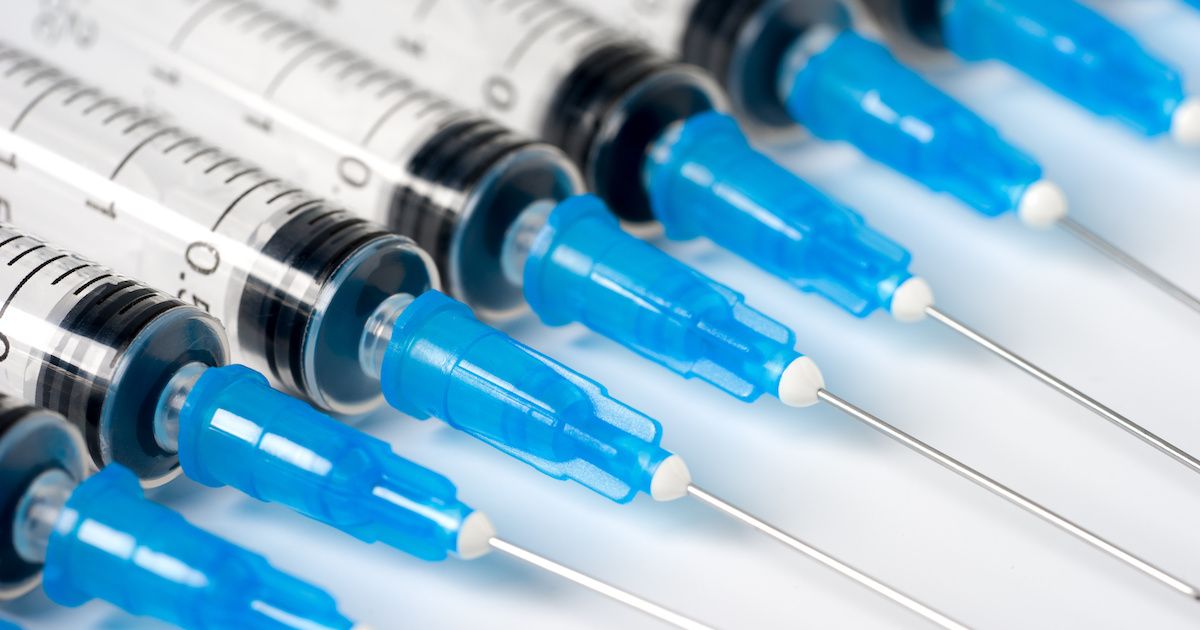- Bone Health
- Immunology
- Hematology
- Respiratory
- Dermatology
- Diabetes
- Gastroenterology
- Neurology
- Oncology
- Ophthalmology
- Rare Disease
- Rheumatology
Developers’ Perspective on Streamlining the Biosimilar Development Process
The regulatory structure of biosimilar development can be safely streamlined and made more efficient and less costly, wrote authors from Sandoz, Fresenius Kabi, Boehringer Ingelheim, and Samsung Bioepis in an opinion article published in BioDrugs.

The regulatory structure of biosimilar development can be safely streamlined and made more efficient and less costly, wrote authors from Sandoz, Fresenius Kabi, Boehringer Ingelheim, and Samsung Bioepis in an opinion article published in BioDrugs.
The authors state that the regulatory pathway for biosimilars was established in the mid-2000s based on the science in routine use and regulatory concerns of that time. They said the 5 billion patient-days of treatment experience accumulated since then has shown that the immunogenicity concerns of the time are “without foundation” and that comparative efficacy trials yield little practical benefit.
The authors outlined options “to streamline biosimilar development immediately without compromising patient safety or product quality.” These options included limiting clinical studies to comparative pharmacokinetics, using a risk-based approach to evaluate immunogenicity, using a global comparator reference product, and eliminating the US-only interchangeability designation.
They suggested that a more streamlined development process will accelerate the development of biosimilars for a wider variety of biologics by making a wider assortment of molecules commercially viable.
Eliminate most comparative efficacy trials
The authors called for a reassessment of the need for comparative efficacy trials, calling it “the single biggest and most immediate opportunity for greater efficiency,” and saying that a more targeted approach is needed. The most significant costs related to biosimilar development are due to comparative clinical trials, they noted.
The authors recommended limiting comparative clinical trials in most cases to those assessing pharmacokinetics (PK). In the initial regulatory guidance set by the US and EU, a head-to-head clinical efficacy trial was the final confirmatory step in the stepwise approach to biosimilar approval. However, the authors said, “there was a presumption at that time that such studies would be informative, rather than predictable and solely confirmatory.”
In practice, the utility of comparative clinical trials has not been as originally thought. It is now known, they said, “that clinical efficacy endpoints are less sensitive measures of biosimilarity than biophysical, biochemical, and functional bioassays,” and that there is “extensive published data…confirming that comparative efficacy studies do not provide decisive pivotal biosimilarity data.”
They mentioned instances (for filgrastim, pegfilgrastim, and insulin) in which the FDA has waived the requirement for comparative clinical trials. Also, the UK’s 2021 revised biosimilar guidance and World Health Organization (WHO) guidelines recommend evaluating each biosimilar on a case-by-case basis, and acknowledge that in many cases a comparative clinical efficacy trial will not be necessary.
Original immunogenicity concerns have been “shown to be without foundation”
The primary determinant of the immunogenicity of a protein is its amino acid sequence, and the amino acid sequence of a biosimilar must be exactly the same as its reference product. Additional sources of immunogenicity are post-translational modifications and process impurities, such as aggregates, degradants, and misfolding of the protein. During manufacturing, analytical tests monitor levels of process impurities, which must be kept at low levels to ensure comparable immunogenicity to the reference product. Therefore, the authors argued, the main sources of potential immunogenicity “are already well controlled” when the biosimilar has been developed “to the standards of stringent health authorities.”
Different immunogenicity compared to the reference product was “one of the foremost concerns when the biosimilar development pathway was first developed,” the authors said. However, after 5 billion patient-days of biosimilar use across the EU and US, which both have strong pharmacovigilance systems, there have been “no unusual or unexpected immunogenicity concerns in practice.” If immunogenicity studies are conducted, they recommend a risk-based approach tailored to the specific molecule.
Eliminate the US interchangeability designation
The authors recommended the US FDA reconsider its interchangeability designation, saying “it is not needed, causes confusion, and should be modified immediately and eliminated in the future.”
Early hypothetical concerns about a potential increase in immunogenicity following a switch from a reference biologic to biosimilar led the FDA to recommend biosimilar developers complete a multiple-switch study to achieve the interchangeability designation. In the US, the interchangeable designation allows for substitution of the interchangeable biosimilar for a reference biologic at the pharmacy level.
According to the authors, there has been no evidence from randomized clinical trials, observational studies, or pharmacovigilance systems that biosimilars developed to the standards of the European Medicines Agency or FDA “elicit different immunological responses, either in quality or of a higher magnitude, compared with their reference products.” Thus, they hold that a multiple-switch study to obtain interchangeability status is not warranted. All biosimilars, they argue, are by definition, interchangeable.
Additional recommendations
The reference biologic is often approved globally based on a single set of studies, and subsequent manufacturing process changes require bridging studies. Thus, the authors argued it is not necessary to compare pharmacokinetics between foreign and locally sourced reference products, as these requirements inflate costs and delay biosimilar development. Also, science-based regulatory consistency between regions should be a priority and “will ensure high global standards for all biosimilars.” Finally, they stressed making use of high-quality real-world data to provide reassurance to patients and health care providers regarding biosimilars. They noted that several quality pharmacovigilance databases already exist, and these data can provide post-marketing confirmation of the safety and effectiveness of biosimilars in real-world practice.
Reference
Cohen HP, Turner M, McCabe D, Woollett GR. Future evolution of biosimilar development by application of current science and available evidence: The developer's perspective. BioDrugs. 2023;37(5):583-593. doi:10.1007/s40259-023-00619-0
Newsletter
Where clinical, regulatory, and economic perspectives converge—sign up for Center for Biosimilars® emails to get expert insights on emerging treatment paradigms, biosimilar policy, and real-world outcomes that shape patient care.
